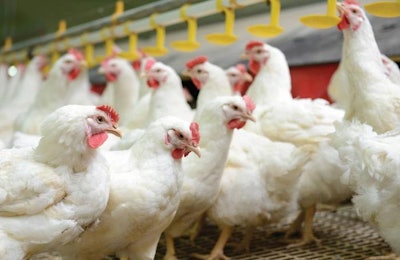
It’s a good time to be in the poultry industry – and least that was the sentiment connecting the seven sessions of the Poultry Interactive Breakout session at ONE 2018, The Alltech Ideas Conference, held May 20-22, 2018.
“As incomes grow, people are consuming more meat overall, but they are eating disproportionately more chicken than any other meat,” said Aidan Connolly, Alltech’s chief innovation officer and vice president – corporate accounts, noting that poultry accounts for half of global meat consumption.
In addition to continued demand, poultry producers will enjoy more profitability, benefiting from 1:1 feed conversion by 2027.
“The chicken industry innovates more than any other meat,” Connolly said.
This sentiment was supported by Osler Desouzant, CEO, OD Consulting: “More poultry products launched since the 90s' than all other meats combined. The consumer isn’t bored. There are 65 new ways of eating chicken every year.”
Desouzant noted that much of the industry’s growth will be driven by increased poultry consumption in developing countries -- 76.4 percent over the next 10 years.
Importance of gut health in ABF poultry production
The goal of antibiotic reduction and elimination in poultry production is to maintain the effectiveness of antimicrobials for human and animal health. Beyond its practical purposes, the marketing of antibiotic-free (ABF) poultry products is driven by the consumer.
“Consumers wants to know where food comes from and how it’s raised and what goes into how it was raised,” said Dr. Kayla Price, Alltech’s Canadian poultry technical and research, during her presentation, “Cleaner meat without antibiotics.”
Today, 45 percent of U.S. poultry production is antibiotic free. For farmers to transition to an ABF program, they must consider the microbiome of both the bird and the farm, Price explained. To be successful in ABF production, she said, the poultry industry must focus on gut health.
“Everything starts with the digestive tract – just think of the bird as a gut with things attached to it,” Price said.
A healthy poultry gut consists of microbes – “some good and some bad and some are bad under stressed conditions,” she said. “To have a healthy gut you need to find balance, diversity -- and long villi.”
Since there’s no silver bullet for ABF production, producers need to make sure they have firm control over four key components: feed, water, management and additives. Price suggests producers adopt a “start to finish” approach – from the breeder to processing – to support gut health.
Nutritionists exploring feed additive solutions for ABF production should ask themselves five questions about the product:
- Will consumer accept it?
- Is it safe?
- Pellet stability?
- What’s the mode of action?
- Will it be consistent?
Price suggested nutritionists consider the synergistic effects of natural feed additives when aiming to prevent disease and inflammation and to improve poultry health and immunity.
Alltech’s ONE Ideas Conference is held annually in Lexington, Kentucky. The 2018 edition hosted more than 4,000 attendees from 40 countries.

















